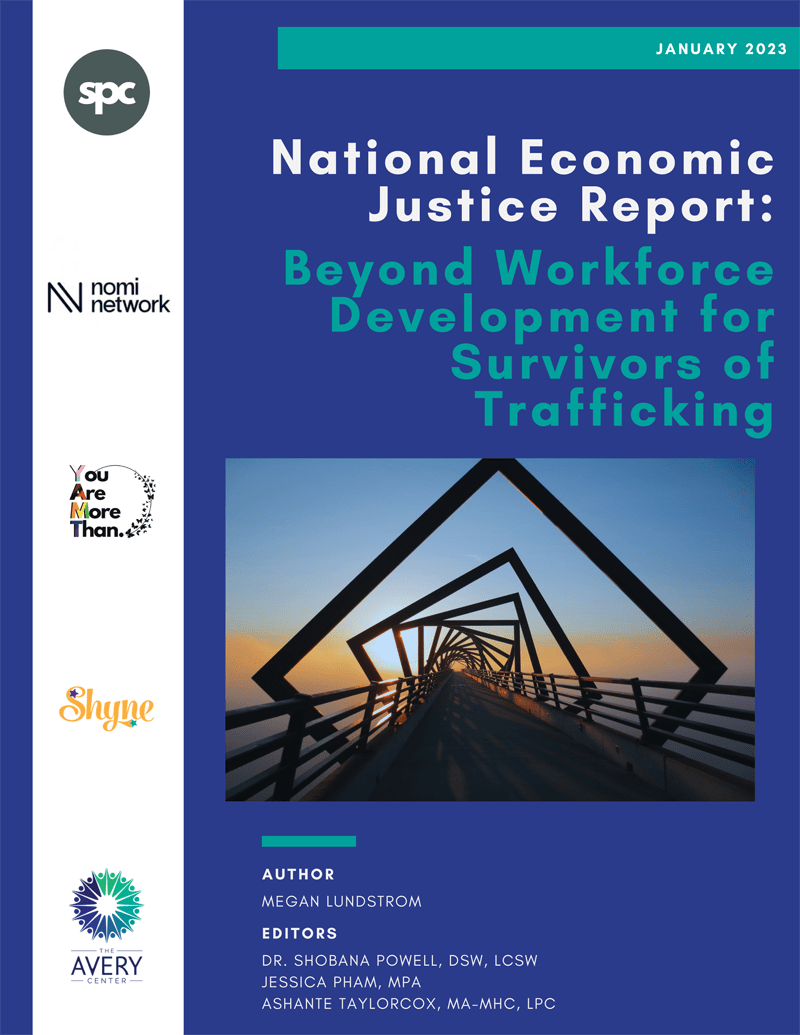National Economic Justice Report: Beyond Workforce Development for Survivors of Trafficking
Job training and workforce readiness programs are common across the US for equipping individuals in marginalized communities with the skills and social supports to enter the traditional workforce. While models and populations served vary widely, the common goal is to identify common barriers to meaningful employment and create new pathways into existing systems. Across many social justice areas, job programs are often one of the first significant program models that emerge when serving a newly-identified population or need, such as previously incarcerated individuals, single parents, or individuals with disabilities.
Within the anti-trafficking sectors specifically, these job programs emerged in the early 2000’s and, while survivors were successfully graduating these organizations’ employment programs, long-term economic stability rates remained extremely low unless the survivors were hired on internally within the organization whose job program they participated in.
While employment programs can provide immediate and relative economic stability and social support for survivors after exiting, they are just one component of long-term stability. Supportive and empowering workplaces are required to move forward with healing and career goals, and accomplishing this requires collaboration between legislators, employers, survivors, and direct service providers.

